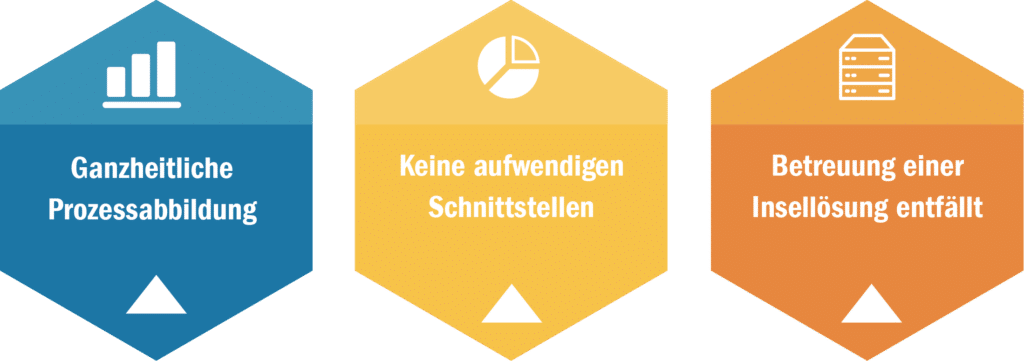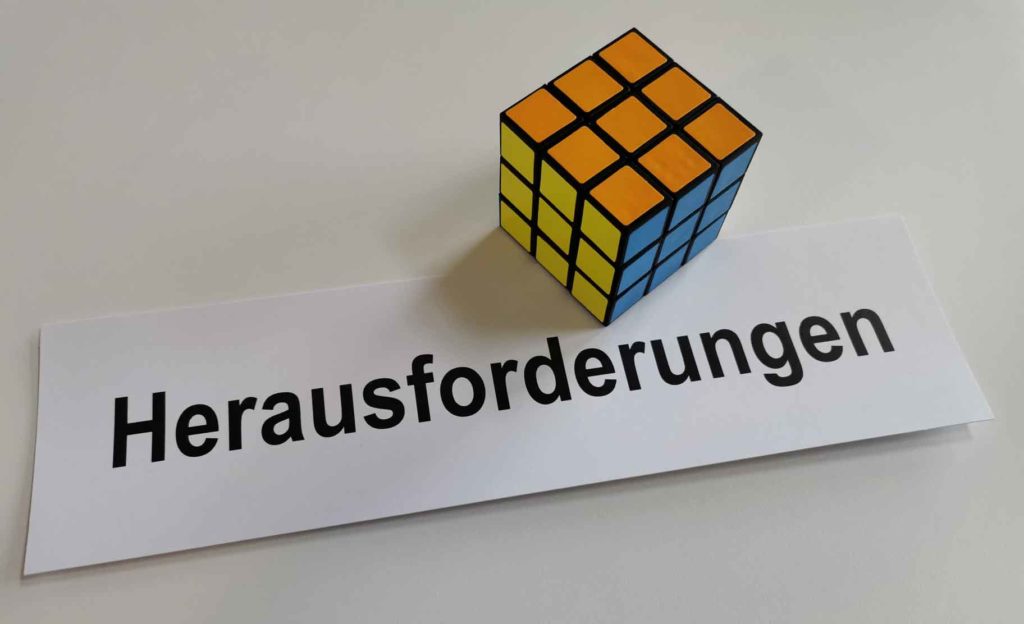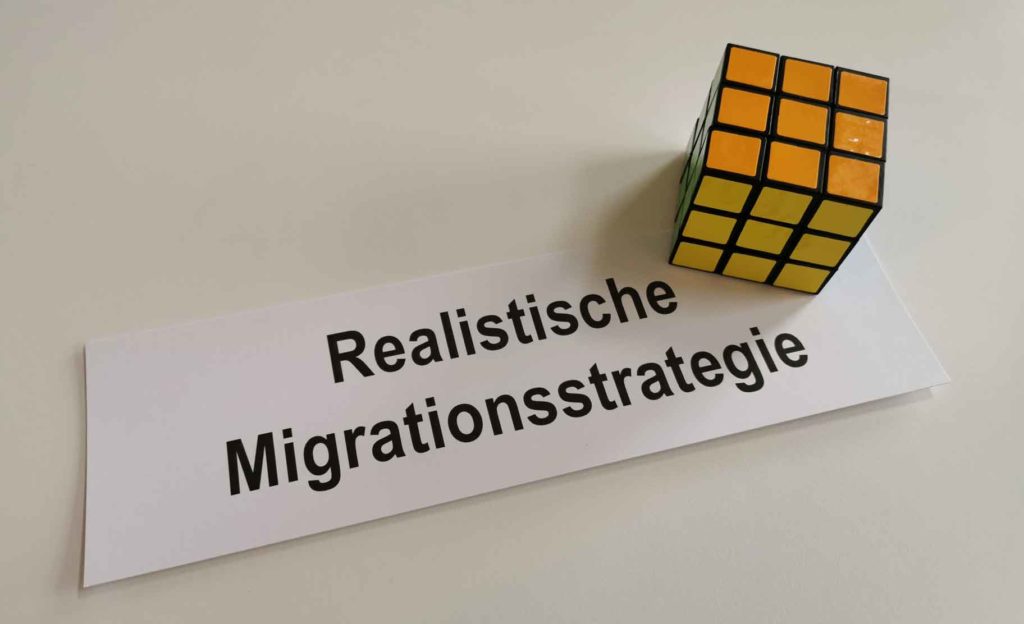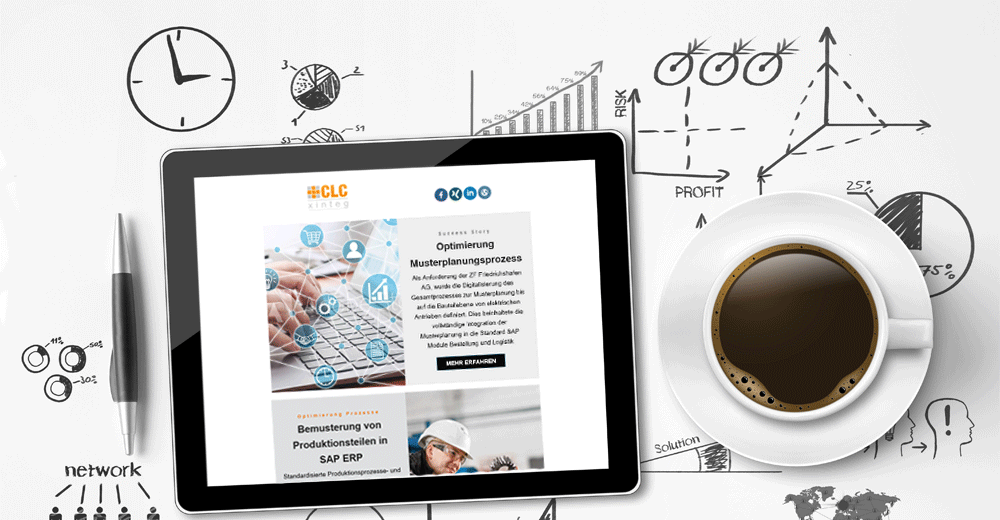Successful transfer of Lotus Notes applications to integrated SAP solutions
"Never change a running system?" No way!
Although companies today use a leading ERP system to support strategic business processes, they still have a large number of legacy applications that have been developed and optimized as isolated solutions over many years. Yet the efficiency gains and added value that can be achieved by replacing these applications with digital processes and functions already integrated in the ERP system are obvious. "The experience of our many years of practice confirms this," emphasizes CLC Managing Director Christian Bach.
Particularly when a previously used stand-alone solution appears to be working well, the uncertainty of the departments is great and the step to replace it seems risky: "After all, the application is technically mature and only developed for this one specific purpose. There are further concerns about large amounts of data that would have to be transferred to a new system. And the question of whether the process can be mapped as well after integration into the leading ERP system as it was before also comes into play. Nevertheless, the assumption "never change a running system" really seems to be out of place here.
Get off the island: Eliminate media discontinuity through direct SAP integration
CLC Managing Director Christian Bach knows from numerous implementation projects in a wide variety of industries what challenges exist and, above all, how requirements for the stand-alone solution can usually be mapped much more simply integrated in the SAP system.

How does the consideration of replacing an isolated legacy application come about?
Christian Bach: Often, deployed applications have been developed from a very specific need, and have then grown historically. Needs and new requirements are regularly incorporated "on the fly", without thinking this through and documenting it in an integrative manner. At some point, you inevitably reach a point where a lack of clarity, modernity or expandability gives you cause to check whether new requirements for the legacy system still fit at all, and whether their implementation is future-oriented. The latter is often done in the course of a business process reengineering, which we accompany.
What other reasons are there for replacing existing isolated applications?
Christian Bach: There are many! For example, that you no longer want to accept the license models of the legacy system manufacturers within your own IT infrastructure. Outdated technology as the basis of the legacy system is also a frequent reason. Likewise, the maintenance of isolated applications means more tied-up capacities in your own IT: Keeping many different systems in productive operation and maintaining them naturally ties up resources.
Advantages of replacing a legacy database
What are the biggest benefits of transferring a legacy application to the leading ERP system?
Christian Bach: An isolated database context of a legacy application is of little help for a holistic process mapping. In contrast, the transfer of an application into an SAP system offers the great advantage of living the business process data integration directly in the ERP system and thus being able to dispense with the development of complex interfaces. As a result, all processes can be mapped more dynamically and flexibly in just one system. This, in turn, is very positively received by all areas of the company, also because comprehensive processes can be controlled in the same way by the user and in a technically uniform way on the basis of core data.

Possible challenges during the replacement
What are the challenges of transferring legacy applications to a leading SAP system?
Christian Bach: For example, the existence of different interests of the departments involved in the company can be quite challenging in project practice. The interests of IT do not necessarily have to coincide with those of a specialist department, so it is very important here to mediate a little, to alleviate fears and reduce worries. Our years of experience in change management are certainly very beneficial here.
Don't miss a thing: The CLC News on interesting SAP topics! Register now
Because technically, almost everything can be implemented nowadays, but the challenges often lie in finding a convincing compromise in the implementation with regard to the "human factor". One should take a close look at which departments are the focus of an upcoming application replacement. In the IT department of a company, there is usually a clear tendency towards the use of exactly one leading ERP system, and thus the replacement of isolated applications. They are concerned about how long the old isolated application can be maintained with their own knowledge and expertise. On the other hand, on the user side of the departments, the opinion prevails that nothing should be changed if a certain workflow of the old application has already been established over a long period of time.

What needs to be considered regarding the data when it is transferred?
Christian Bach: Since we as CLC mainly work with SAP and carry out projects, I can define this as a rather uncritical factor. In fact, the SAP applications used in our practice can basically accept and process "everything" in terms of data formats - of course, it always depends a little on the data quality of the source system, to what extent it has to be prepared there first. Theoretically, the challenge is rather to export the legacy format of the data from the legacy application if such functions were not included in the original implementation. In most cases, however, the extraction and import tools are suitable for all data formats, so that there are no major technical challenges here.
A typical database as a legacy system is Lotus Notes, which is still used in very many companies.
Christian Bach: That is correct, but here the trend is clearly going in the direction of a replacement, especially if a full-fledged ERP system is already available. Notes databases have taken on a wide variety of tasks in all companies, but these can also be mapped by SAP without any problems.
Examples from practice
What is a typical example of this?
Christian Bach: In recent years, we have replaced many different isolated applications and integrated them into SAP. "Typical" in the sense of recurring were and are, for example, applications for the management of product data, product development and change processes, as well as gate reviews for projects. But also databases for a company-wide application system or CAPEX investments with controlled release processes are the subject of our projects. And we are currently supporting groups in the chemical industry in the replacement of productive Lotus Notes databases, within which study reports relating to chemical substances are entered, managed and released on a workflow basis. Within the company, the decision was made to no longer use these Lotus Notes applications. This resulted in the urgent need to provide a future-oriented application with which the sensitive "document-based" business processes could be seamlessly continued. A long-needed optimization of the user experience as well as the provision of modern, role-based apps and digital assistants for users play a major role here. Furthermore, people trust in our ability to build a comprehensive document type concept integrated in the SAP system and a future overall data model with reference to existing SAP business data.

How exactly could such a technical implementation look like?
Christian Bach: At the beginning it is about enabling an export of the relevant documents from Lotus Notes - of course including the keywording or metadata defined in Lotus Notes. The goal: to provide all relevant legacy data and documents in a structured form. This information is then imported into the new target structures of the SAP solution using the "CLC-PADD® Process Engine" in a controlled, sequential and rule-based manner, taking into account all dependencies. In the process, the already existing SAP archive infrastructure is simply used, another advantage of the now direct integration into an SAP landscape! Based on the document type concepts, data models and workflow processes defined in advance by CLC, digital processes are ultimately derived on the basis of CLC-PADD® in the SAP system, to which the transferred information from the legacy system is assigned. In parallel, the need for UI5-based apps for selected user groups is derived, which we are developing with our CLC-PADD® S Suite+ can generate. And when our customers are ready to discuss cloud service models based on the SAP Cloud Platform, we are ready for that too!
Thank you very much for the time and the interview!
We will gladly advise you!
If you have any questions or would simply like to find out more about the topic, then simply contact us without any obligation.
Further information
Migration from legacy databases into the leading SAP system
Free Webinar: Simplify SAP EH&S


